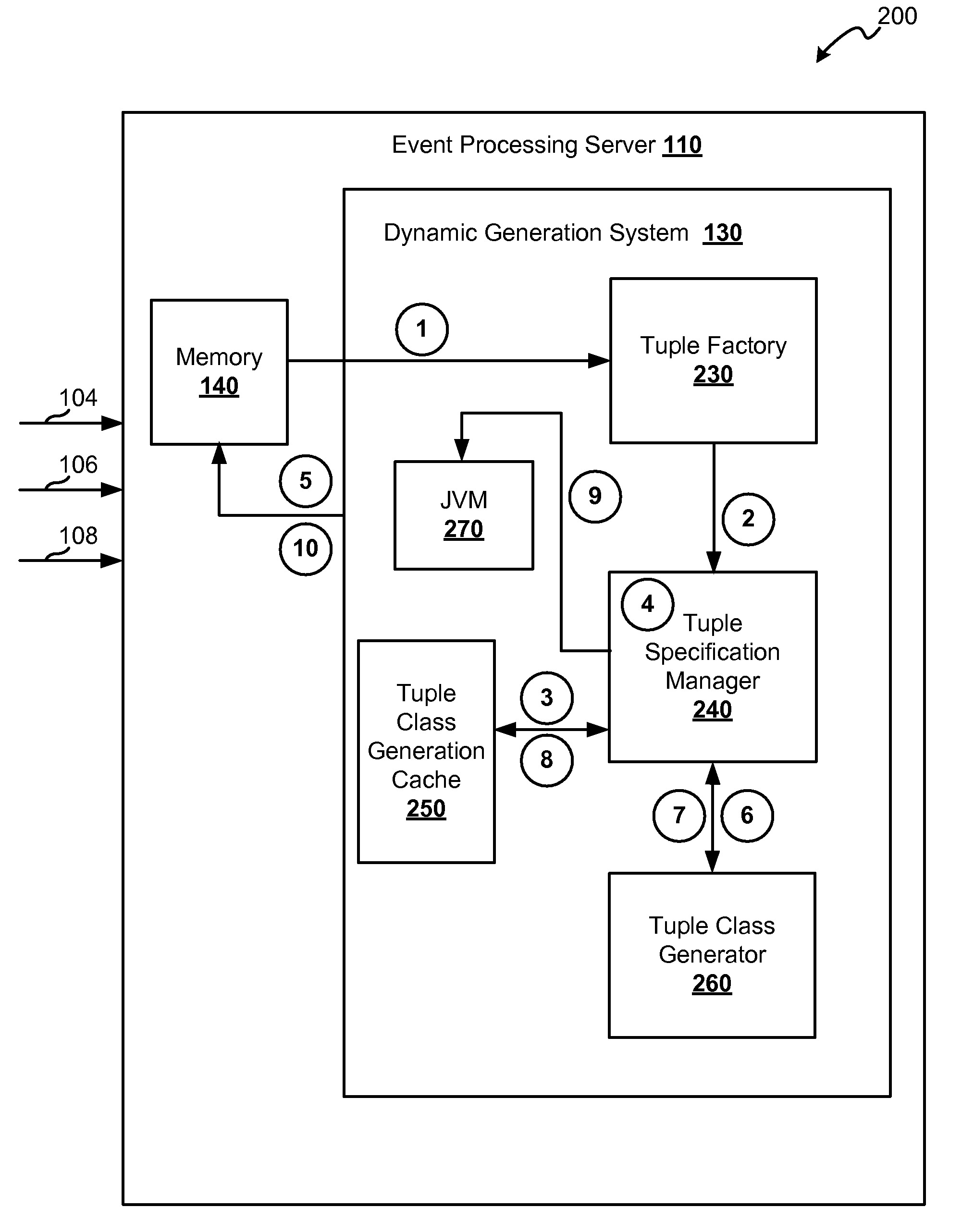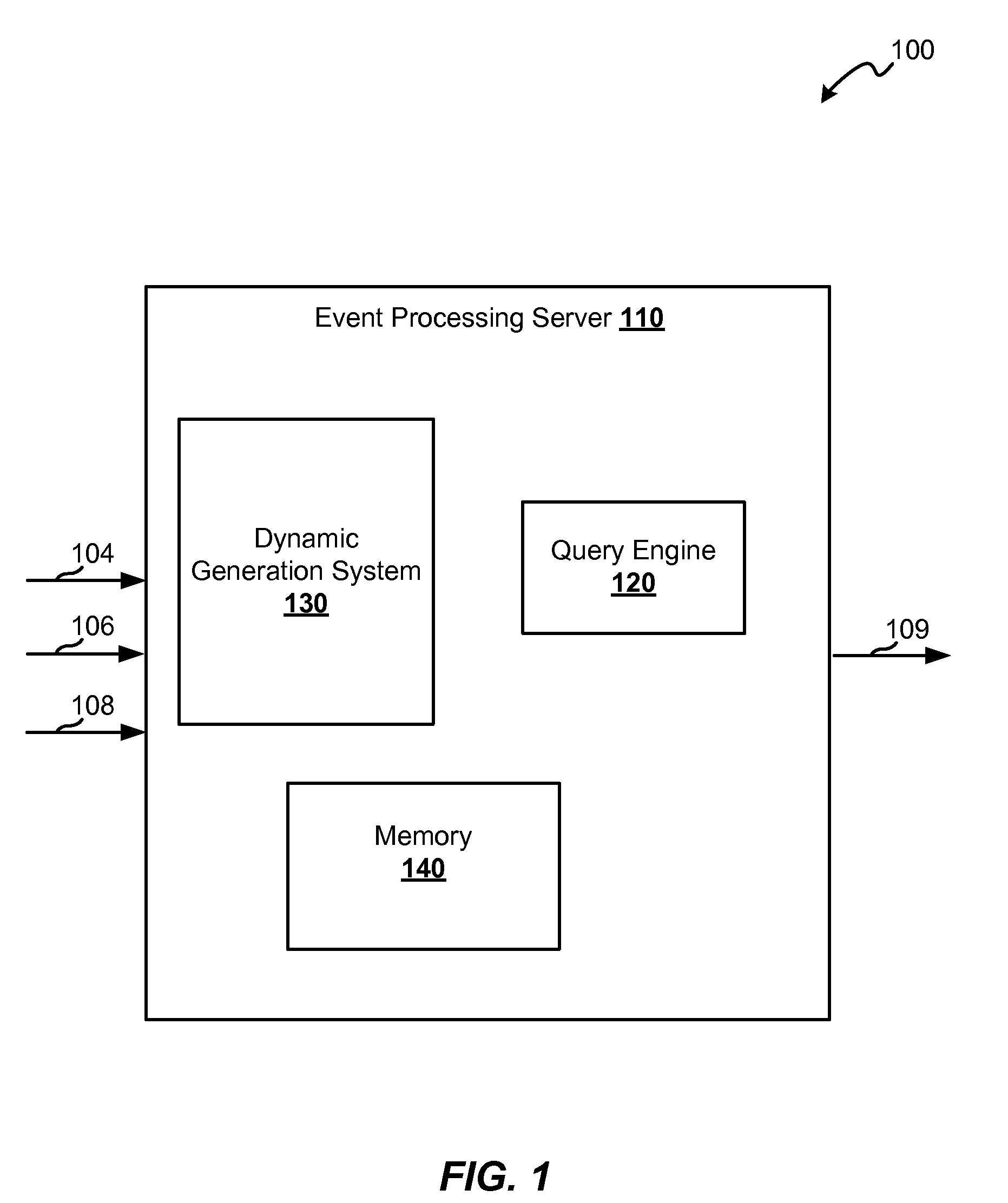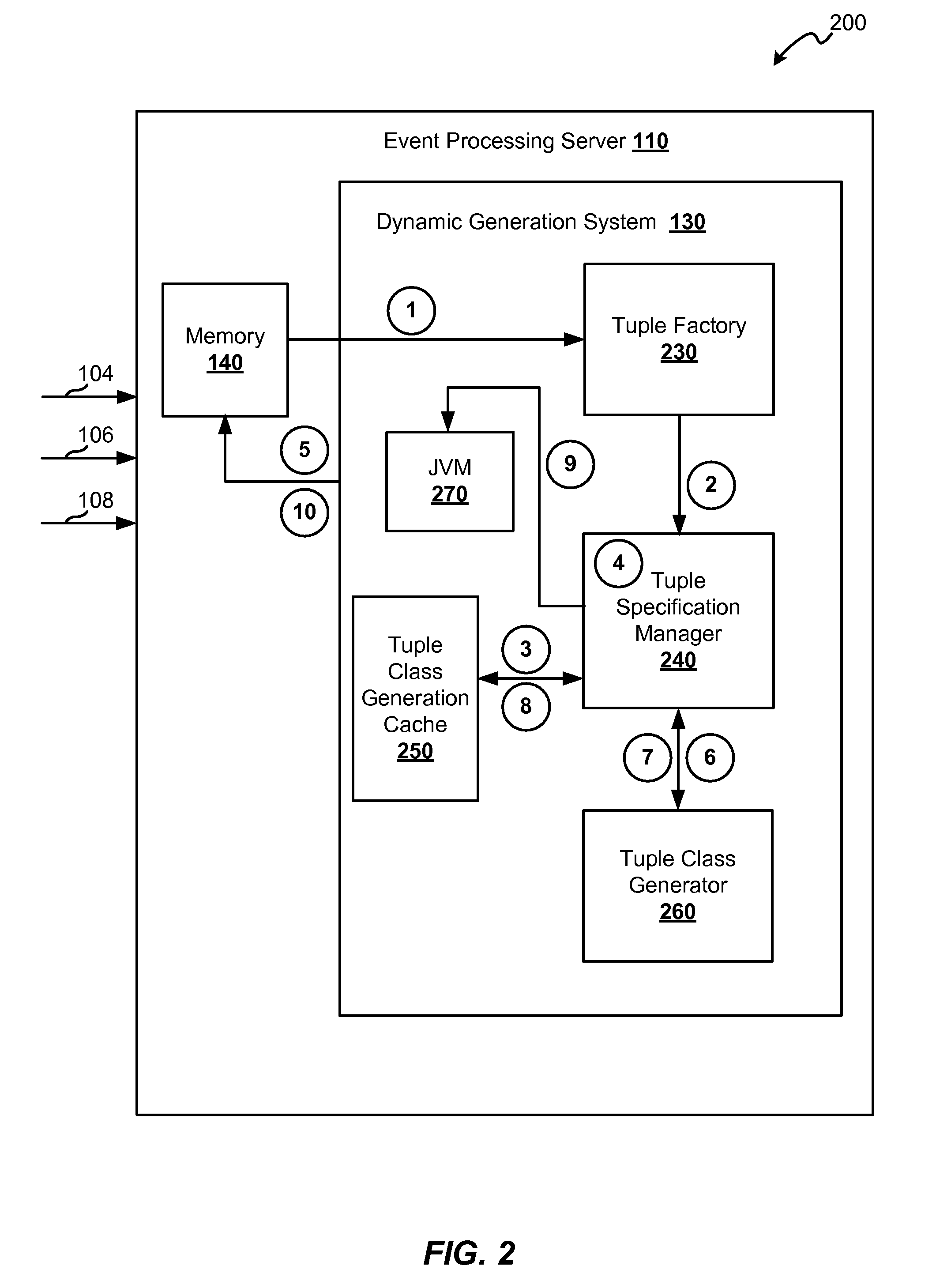Framework for dynamically generating tuple and page classes
a dynamic generation and page class technology, applied in the field of data stream management, can solve the problems of impracticality of storing events data in a table, traditional tools and algorithms are unable to handle data streams, etc., and achieve the effect of reducing the memory used for processing events, and reducing the memory required for storing tuples
- Summary
- Abstract
- Description
- Claims
- Application Information
AI Technical Summary
Benefits of technology
Problems solved by technology
Method used
Image
Examples
Embodiment Construction
[0022]In the following description, for the purposes of explanation, specific details are set forth in order to provide a thorough understanding of embodiments of the invention. However, it will be apparent that the invention may be practiced without these specific details.
[0023]Embodiments of the present invention provide techniques for reducing the memory used for processing events received in a data stream. In one embodiment, this is achieved by reducing the memory required for storing tuples. In one embodiment, the data stream is comprised of a plurality of tuples as stored in a memory. Reducing the memory required for storing tuples improves the performance of an event processing system by enabling the system to handle a larger number of tuples. As a result, the processing system is capable of handling tuples received at a high input rate.
[0024]A data stream or event stream is a real-time, continuous, sequence of events. The stream thus represents sets of data. The elements in ...
PUM
 Login to View More
Login to View More Abstract
Description
Claims
Application Information
 Login to View More
Login to View More - R&D
- Intellectual Property
- Life Sciences
- Materials
- Tech Scout
- Unparalleled Data Quality
- Higher Quality Content
- 60% Fewer Hallucinations
Browse by: Latest US Patents, China's latest patents, Technical Efficacy Thesaurus, Application Domain, Technology Topic, Popular Technical Reports.
© 2025 PatSnap. All rights reserved.Legal|Privacy policy|Modern Slavery Act Transparency Statement|Sitemap|About US| Contact US: help@patsnap.com



